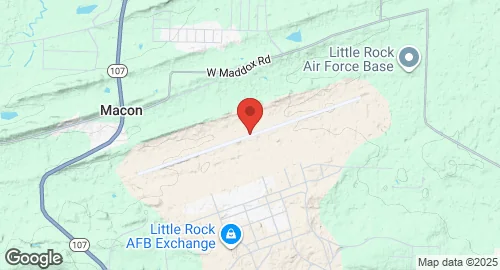Little Rock Air Force Base
Summary
| Operating Country | 🇺🇸 United States |
| Location | 🇺🇸 United States |
| Status | ◉ Active |
| Usage | Military only |
| Year built | 1953 |
| Operating Organization | US Air Force |
| Units |
|
Description
Little Rock Air Force Base (LRF/KLRF) is a United States Air Force installation located in Jacksonville, Arkansas, approximately 17 miles northeast of Little Rock. Construction of the base began in 1953, and it officially opened on January 24, 1955. The facility spans 6,217 acres and operates under the ownership of the Department of Defense, with the U.S. Air Force as its operator, controlled by Air Mobility Command (AMC).
Historically, Little Rock AFB was activated by Strategic Air Command (SAC) in 1955, hosting the 384th Bombardment Wing with B-47E Stratojets and the 70th Reconnaissance Wing. In the early 1960s, it housed 18 Titan II Intercontinental Ballistic Missiles, managed by the 308th Strategic Missile Wing. A notable incident occurred on September 18, 1980, when a Titan II missile exploded at Launch Complex 374-7 following a dropped socket, resulting in one fatality and the destruction of the complex. In March 1970, the base transitioned to Tactical Air Command (TAC) and became a primary C-130 Hercules training base, later transferring to Military Airlift Command (MAC) in 1974, and then to Air Mobility Command (AMC) in 1992.
Currently, Little Rock AFB is the Department of Defense's primary C-130 Hercules training base. The host unit is the 19th Airlift Wing, assigned to AMC's 18th Air Force, which operates a large C-130 Hercules transport fleet. Other units stationed at the base include the 189th Airlift Wing of the Arkansas Air National Guard, the 314th Airlift Wing (Air Education and Training Command), the 913th Airlift Group (Air Force Reserve Command), and the C-130 division of the U.S. Air Force Weapons School (Air Combat Command). The base features one concrete runway, 07/25, measuring 3,659.7 meters (12,007 feet).
